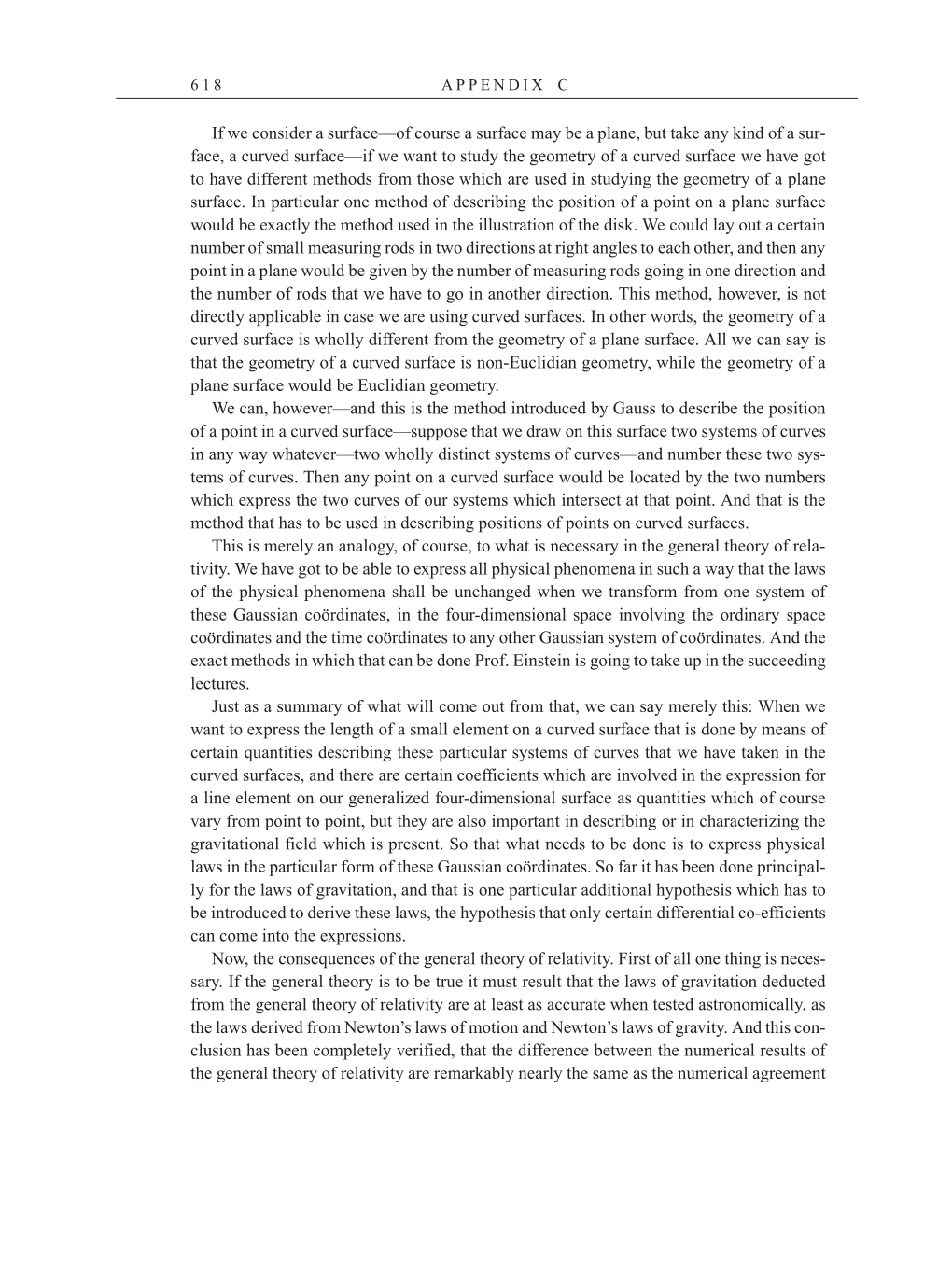6 1 8 A P P E N D I X C
If we consider a surface—of course a surface may be a plane, but take any kind of a sur-
face, a curved surface—if we want to study the geometry of a curved surface we have got
to have different methods from those which are used in studying the geometry of a plane
surface. In particular one method of describing the position of a point on a plane surface
would be exactly the method used in the illustration of the disk. We could lay out a certain
number of small measuring rods in two directions at right angles to each other, and then any
point in a plane would be given by the number of measuring rods going in one direction and
the number of rods that we have to go in another direction. This method, however, is not
directly applicable in case we are using curved surfaces. In other words, the geometry of a
curved surface is wholly different from the geometry of a plane surface. All we can say is
that the geometry of a curved surface is non-Euclidian geometry, while the geometry of a
plane surface would be Euclidian geometry.
We can, however—and this is the method introduced by Gauss to describe the position
of a point in a curved surface—suppose that we draw on this surface two systems of curves
in any way whatever—two wholly distinct systems of curves—and number these two sys-
tems of curves. Then any point on a curved surface would be located by the two numbers
which express the two curves of our systems which intersect at that point. And that is the
method that has to be used in describing positions of points on curved surfaces.
This is merely an analogy, of course, to what is necessary in the general theory of rela-
tivity. We have got to be able to express all physical phenomena in such a way that the laws
of the physical phenomena shall be unchanged when we transform from one system of
these Gaussian coördinates, in the four-dimensional space involving the ordinary space
coördinates and the time coördinates to any other Gaussian system of coördinates. And the
exact methods in which that can be done Prof. Einstein is going to take up in the succeeding
lectures.
Just as a summary of what will come out from that, we can say merely this: When we
want to express the length of a small element on a curved surface that is done by means of
certain quantities describing these particular systems of curves that we have taken in the
curved surfaces, and there are certain coefficients which are involved in the expression for
a line element on our generalized four-dimensional surface as quantities which of course
vary from point to point, but they are also important in describing or in characterizing the
gravitational field which is present. So that what needs to be done is to express physical
laws in the particular form of these Gaussian coördinates. So far it has been done principal-
ly for the laws of gravitation, and that is one particular additional hypothesis which has to
be introduced to derive these laws, the hypothesis that only certain differential co-efficients
can come into the expressions.
Now, the consequences of the general theory of relativity. First of all one thing is neces-
sary. If the general theory is to be true it must result that the laws of gravitation deducted
from the general theory of relativity are at least as accurate when tested astronomically, as
the laws derived from Newton’s laws of motion and Newton’s laws of gravity. And this con-
clusion has been completely verified, that the difference between the numerical results of
the general theory of relativity are remarkably nearly the same as the numerical agreement
